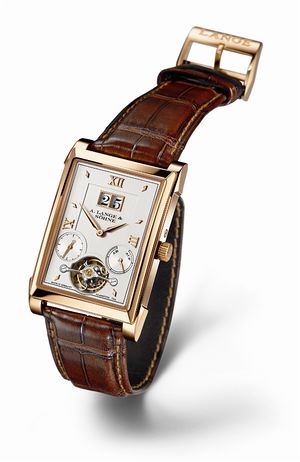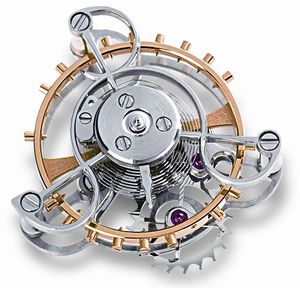Progress through Standstill: the CABARET TOURBILLON: Unterschied zwischen den Versionen
| Zeile 1: | Zeile 1: | ||
Progress through Standstill: the CABARET TOURBILLON | Progress through Standstill: the CABARET TOURBILLON | ||
[[Bild:Lange Zifferblattmarke.jpg|thumb|A. Lange & Söhne]] | [[Bild:Lange Zifferblattmarke.jpg|thumb|A. Lange & Söhne]] | ||
| − | ''The tourbillon was invented more than 200 years ago. It has lost none of its fascination since then. A. Lange & Söhne has just written a new chapter in the history of the “whirlwind” with the new CABARET TOURBILLON and the first stop-seconds feature ever implemented in a tourbillon calibre.'' | + | ''The tourbillon was invented of [[Breguet, Abraham-Louis|Abraham-Louis Breguet]] more than 200 years ago. It has lost none of its fascination since then. A. Lange & Söhne has just written a new chapter in the history of the “whirlwind” with the new CABARET TOURBILLON and the first stop-seconds feature ever implemented in a tourbillon calibre.'' |
---- | ---- | ||
Version vom 4. April 2008, 23:07 Uhr
Progress through Standstill: the CABARET TOURBILLON
The tourbillon was invented of Abraham-Louis Breguet more than 200 years ago. It has lost none of its fascination since then. A. Lange & Söhne has just written a new chapter in the history of the “whirlwind” with the new CABARET TOURBILLON and the first stop-seconds feature ever implemented in a tourbillon calibre.
In 1997, the CABARET amazed the world with its elegant rectangular shape that evoked the luxury, charisma, and perfection of the Art Deco epoch. Eleven years after the launch of its predecessor, the CABARET TOURBILLON by A. Lange & Söhne now sets the stage for a world debut starring the balance in a rotating carriage. For the first time ever, the “whirlwind” – the literal translation of tourbillon – has been tamed with a stop-seconds mechanism.
But first things first. An ingenious idea inspired the development of the carriage escapement for which a patent was filed in 1801. It was predestined for pocket watches that were typically slipped into a vest pocket in the same upright orientation. In the tourbillon, the rate-governing parts – the balance and escapement assemblies – were integrated in a cage that rotated about the fourth wheel. This neutralised the position error caused by the pull of gravity on the balance wheel which can never be poised with absolute perfection, resulting in greater rate accuracy. In modern wristwatches that are worn in constantly changing orientations, the need for rate corrections is no longer a significant issue. Nonetheless, because of its intricacy and complexity, the tourbillon has lost none of its original fascination. Executed in artisanal perfection as in the three tourbillon calibres crafted so far at Lange, it remains the archetype of horological complications mastered only by the best of the watchmaking elite.


